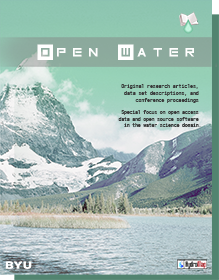Article Title
Keywords
A1B, climate change; Upper Awash sub-basin, GCM, Bias correction, stream flow; SWAT, Water Resource
Abstract
Climate changes alter regional hydrologic conditions and results in a variety of impacts on water resource systems. Such hydrologic changes will affect almost every aspect of human well-being. The economy of Ethiopia mainly depends on agriculture, and this in turn largely depends on available water resources. The aim of this study is to assess the impacts of climate change on surface water resource availability of upper Awash River basin by using Soil and Water Assessment Tool (SWAT) hydrological model and Regional climate model. This studies were present the results on downscaling of large scale atmospheric variables simulated with regional climate model (RCM) to meteorological variables at local scale in order to investigate the hydrological impact of a possible future climate change scenario for three Bench mark year 2020, 2050 and 2080 under A1B emission scenario from ECHAM5 model was used in this work.
Bias-correction methods have been developed to adjust RCM climate variables. Average annual maximum temperature changes for the upper awash sub-basin were 2020: 0.53 °C, 2050 1.18 °C, and 2080: 1.87 °C relative to the historical climate. Average annual minimum temperature change for were 0.58°C, 0.82 °C and 2.14 °C in 2020, 2040 and 2080 respectively. Basin-average annual rainfall based on the CCLM downscaling were 2.4, -2.14 and -10.109% for future periods of 2011-2040, 2041-2070 and 2071-2100 respectively. The annual reduction of stream flow for Upper Awash sub-basin for A1B scenario is 2.46 %and 18.14% in 2050s and 2080s respectively. But for the time period of 2020s the stream flow increased by 4.9% for A1B scenario The simulated flow at: 2041-2070 and 2071-2100 with scenario from RCM shows reduction of runoff by 1.52% and 3.52% in the sub-basin and it is directly related to the reduction and increment in precipitation, but the annual runoff increase in 2020 by 8%. Model result shows that about 44.36% of annual rainfall contributes to stream flow as surface runoff. The paper was also including potential strategy recommendations to communities, policy and decision makers for planning adaptation measures in the water sector of the study area.
BYU ScholarsArchive Citation
Daba, Mekonnen; Tadele, Kassa; and Shemalis, Andualem
(2015)
"Evaluating Potential Impacts of Climate Change on Surface Water Resource Availability of Upper Awash Sub-Basin, Ethiopia,"
Open Water Journal: Vol. 3:
Iss.
1, Article 22.
Available at:
https://scholarsarchive.byu.edu/openwater/vol3/iss1/22
